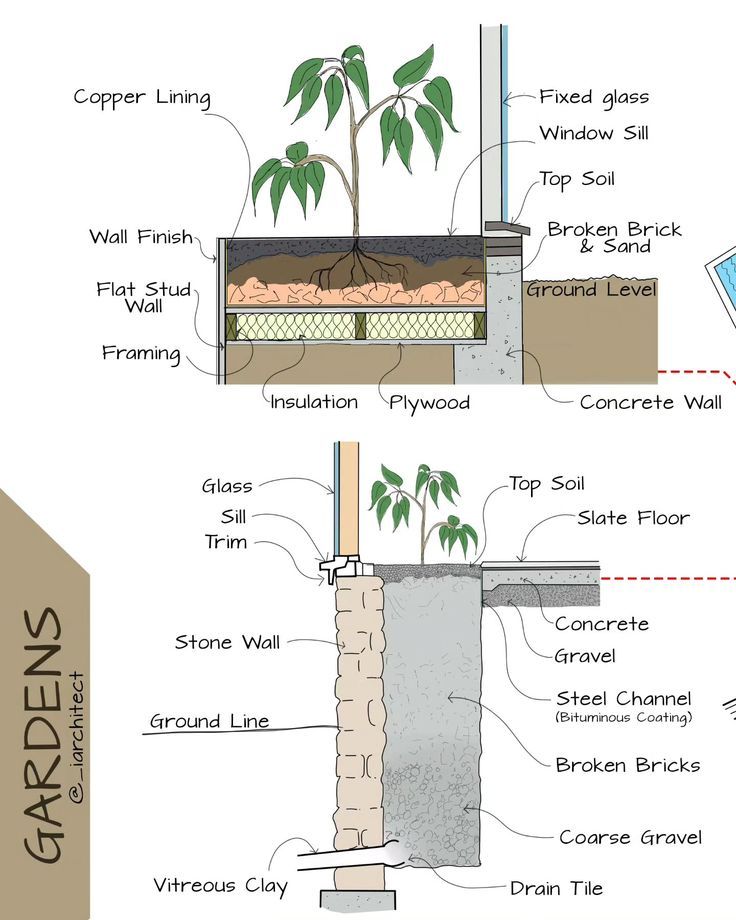From soil layers to drainage tiles, here’s how modern construction integrates plants into buildings for sustainability and beauty.
🏗️ The Idea Behind Green Gardens in Buildings
Bringing nature into architecture is not just about aesthetics—it’s about creating healthier spaces, improving thermal comfort, and supporting sustainability. But to integrate gardens into walls, terraces, or window ledges, architects need to consider structural strength, drainage, and insulation.
The diagram shows two sections:
- 🌱 Garden integrated with a stud wall and concrete wall
- 🌱 Garden built above a stone wall with advanced drainage
🌿 Section 1: Garden with Stud Wall & Concrete Wall
- Top Soil: This is the fertile layer where plants grow.
- Broken Brick & Sand: Helps with drainage and prevents waterlogging.
- Wall Finish & Stud Wall: Protects the interior structure while supporting the outer layer.
- Insulation & Plywood: Keeps moisture from affecting indoor temperatures and prevents rot.
- Copper Lining: Acts as a protective barrier against water seepage.
- Fixed Glass Window & Sill: Provides light and creates a direct indoor-outdoor garden experience.
👉 This setup is perfect for small indoor planters near windows, blending plants with living spaces.
🌿 Section 2: Garden with Stone Wall & Drainage
- Top Soil & Slate Floor: A strong growing base with a durable flooring finish.
- Concrete & Gravel Layer: Adds strength while improving drainage.
- Steel Channel with Bituminous Coating: Protects against corrosion and water damage.
- Broken Bricks & Coarse Gravel: Ensure water flows downward instead of stagnating.
- Drain Tile with Vitreous Clay: Safely channels excess water away from the structure.
- Stone Wall: Provides strength and rustic aesthetics.
- Glass & Trim Above: Ensures plenty of natural light enters while framing the garden.
👉 This method is ideal for larger integrated gardens on terraces, courtyards, or even basement-adjacent gardens where water control is critical.
🌎 Why This Matters in Modern Architecture
- 🌱 Thermal Regulation: Gardens act as insulation, keeping buildings cooler in summer and warmer in winter.
- 💧 Water Management: Layers of gravel, clay, and drain tiles ensure proper water flow and prevent structural damage.
- 🌿 Aesthetic & Health Benefits: Plants reduce stress, clean indoor air, and bring beauty into built spaces.
- 🏠 Sustainability: Using broken bricks, gravel, and natural insulation makes construction eco-friendly and cost-efficient.
